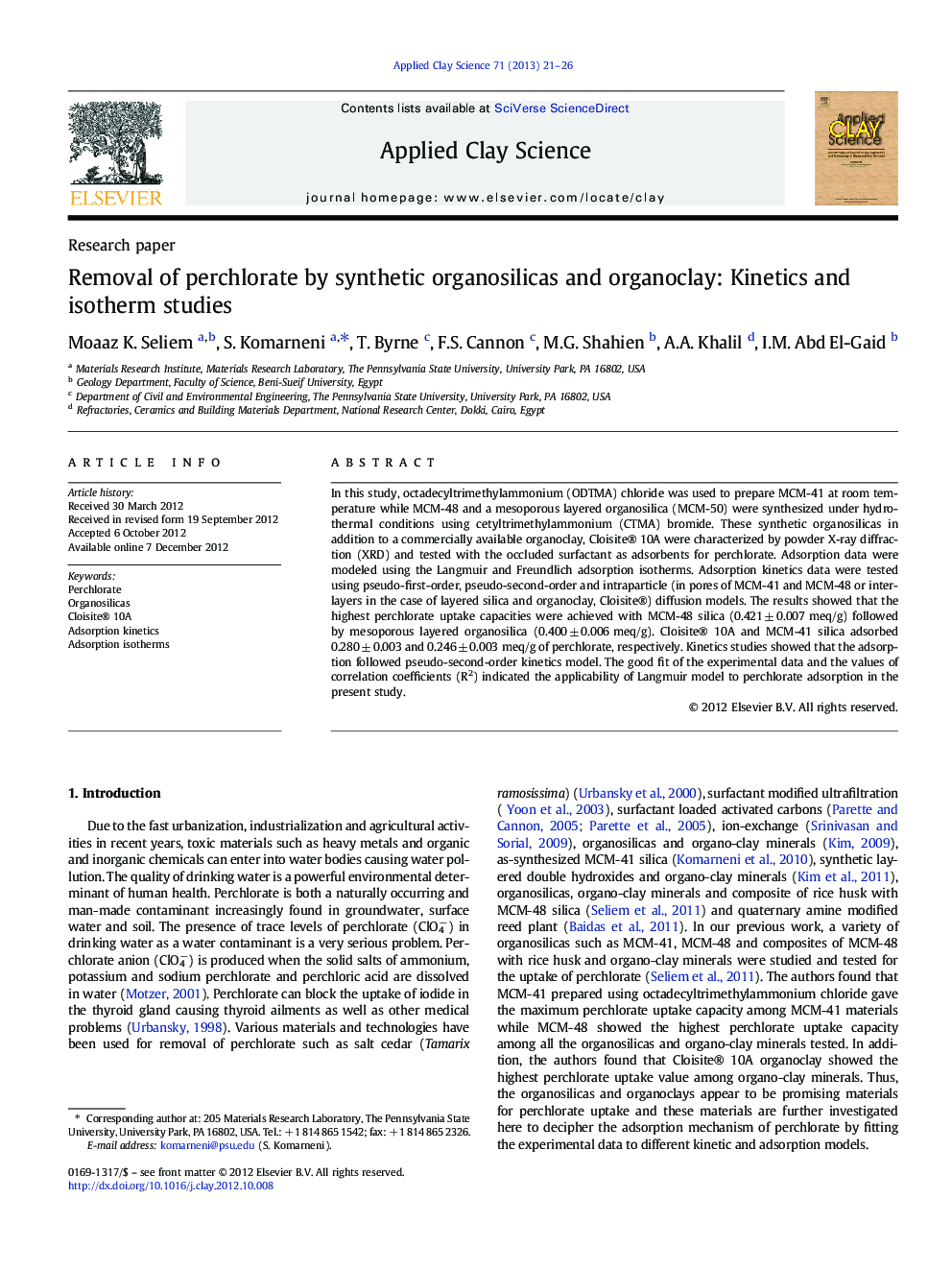| کد مقاله | کد نشریه | سال انتشار | مقاله انگلیسی | نسخه تمام متن |
|---|---|---|---|---|
| 1695142 | 1519099 | 2013 | 6 صفحه PDF | دانلود رایگان |

In this study, octadecyltrimethylammonium (ODTMA) chloride was used to prepare MCM-41 at room temperature while MCM-48 and a mesoporous layered organosilica (MCM-50) were synthesized under hydrothermal conditions using cetyltrimethylammonium (CTMA) bromide. These synthetic organosilicas in addition to a commercially available organoclay, Cloisite® 10A were characterized by powder X-ray diffraction (XRD) and tested with the occluded surfactant as adsorbents for perchlorate. Adsorption data were modeled using the Langmuir and Freundlich adsorption isotherms. Adsorption kinetics data were tested using pseudo-first-order, pseudo-second-order and intraparticle (in pores of MCM-41 and MCM-48 or interlayers in the case of layered silica and organoclay, Cloisite®) diffusion models. The results showed that the highest perchlorate uptake capacities were achieved with MCM-48 silica (0.421 ± 0.007 meq/g) followed by mesoporous layered organosilica (0.400 ± 0.006 meq/g). Cloisite® 10A and MCM-41 silica adsorbed 0.280 ± 0.003 and 0.246 ± 0.003 meq/g of perchlorate, respectively. Kinetics studies showed that the adsorption followed pseudo-second-order kinetics model. The good fit of the experimental data and the values of correlation coefficients (R2) indicated the applicability of Langmuir model to perchlorate adsorption in the present study.
Kinetics study of perchlorate uptake by MCM-41, MCM-48, layered organosilica and Cloisite® 10A.Figure optionsDownload as PowerPoint slideHighlights
► MCM-48 silica with occluded surfactant showed the highest perchlorate uptake.
► Perchlorate uptake followed pseudo-second-order kinetics model.
► Perchlorate uptake fitted well with Langmuir model of adsorption.
Journal: Applied Clay Science - Volume 71, January 2013, Pages 21–26